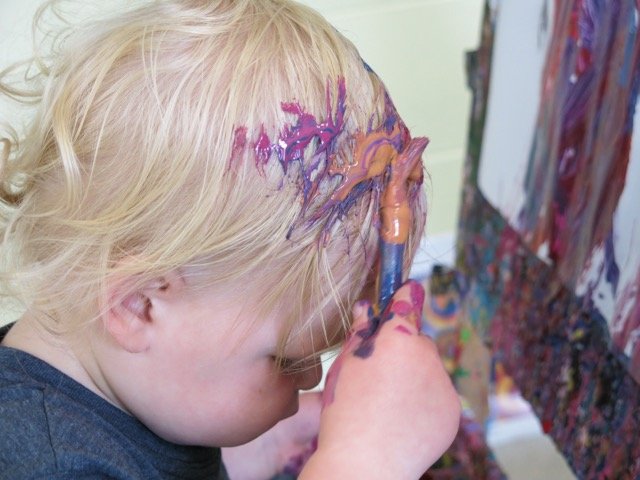How would Paint measure up on a developmental checklist?
Shared by KIM ATKINSON
How would Paint measure up on a developmental checklist? Does Paint know how to express itself appropriately? Does it mix well with others? Can it stay focused on the task at hand? Or does Paint trickle off in unexpected directions? Neoliberal approaches to education are built on child centered, quantifiable evidence-based conceptions of learning, commonly in the form of checklists. (Nxumalo, 2016) These approaches view the child as ‘knowable’ and suggest particular behaviours as necessary and right. But children, like Paint, are entangled in the material discursive assemblage of relations, place, history and time (Pacini-Ketchabaw, Kind, & Kocher, 2017); complexities that cannot be contained in static formations such as checklists. Playfully inviting Paint to ‘measure up’ offers a way of destabilizating the checklist, and illuminating the reductive, anthropocentric logics embedded in developmental conceptions of childhood. What else might we ask to ‘measure up’?
References
Nxumalo, F. (2016). Storying practices of witnessing: Refiguring quality in everyday pedagogical encounters. Contemporary Issues in Early Childhood, 17(1), 39-53. doi:10.1177/1463949115627898
Pacini-Ketchabaw, V., Kind, S., & Kocher, Kocher, L. M., (2017). Encounters with materials in early childhood education. New York, NY: Routledge.

